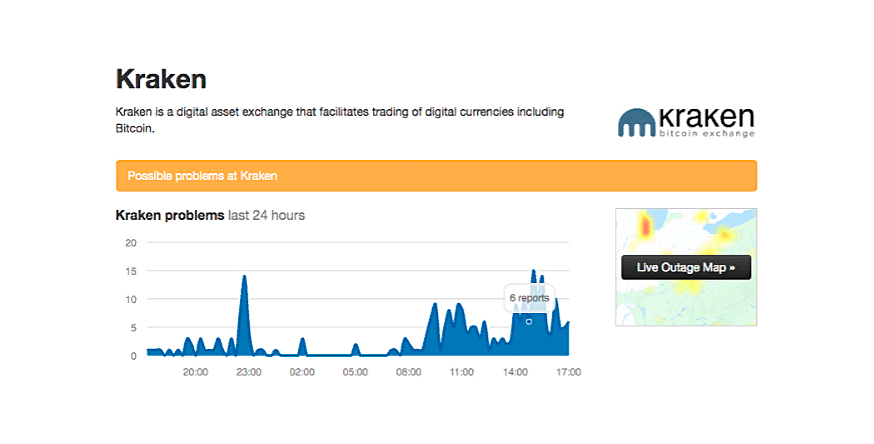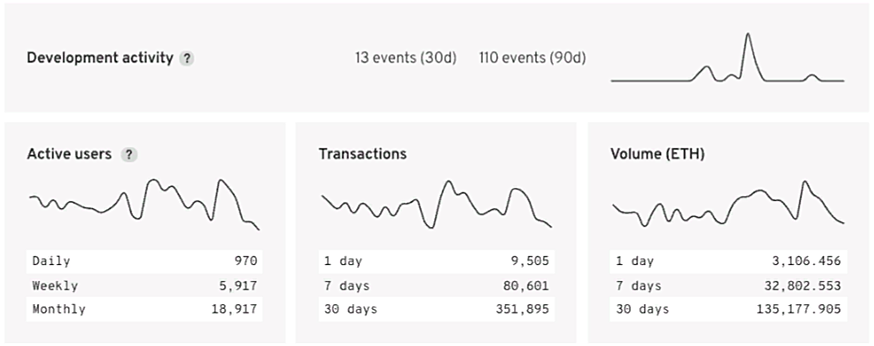Centralized Exchange VS Decentralized Exchange Who is the future of cryptocurrency?
There is a major contradiction in the field of cryptocurrency. The invention of Bitcoin should have brought about a new era of finance: trust transactions, frictionless cross-border transactions, and uncensored Internet cash.
However, a quick look at the market history of cryptocurrency transactions, you will only see a series of chaotic theft, extortion, fraud, government repression and the confiscation of funds, isn't the invention of cryptocurrency just to solve these problems?

(Source: howmuch.net)
- US Presidential Candidate Andrew Yang will accept bitcoin donations from Lightning Network
- Morning market analysis: BTC shock adjustment is still continuing, mainstream currencies are still under strong pressure
- EU: At present, the digital currency market is “anti-competitive”, and the European Central Bank’s digital currency will reshape the competition.
The growing market has attracted traders to engage in cryptocurrency business, however, technical issues have forced traders to use centralized cryptocurrency exchanges.
On the surface, large centralized exchanges seem to be doing very well. Many cryptocurrency exchanges have good trading volume, a good user interface, a wide range of cryptocurrencies, and easy entry for beginners. Larger Coinbase and CEX.IO allow you to purchase cryptocurrencies in a variety of ways, providing integrated tools and technical indicators to make transactions easier and more efficient. At first glance, everything is fine.
This is especially true when compared to decentralized exchanges. In fact, for most traders, decentralized exchanges are not even considered, and the lack of usability is enough to discourage all beginners.
In addition, traders also like some aspects of traditional finance, such as providing insurance for the Exchange Fund, providing fund custody services for institutions, and using trading tools such as margin financing and securities lending. All of these factors add up to what seems to be a simple choice for cryptocurrency traders. Until you dig deeper…
It is estimated that only $1.7 billion of funds were stolen in 2018, and hundreds of billions of dollars were stolen in 2019.
Below is a quick timeline of the main cryptocurrency exchange loss event and the current estimate.
Bitcoinica — 2012 — $430,000;
Mt. Gox—2014—$450 million;
Poloniex—2014—12.3% Bitcoin Fund;
Bitstamp—2015—$5.1 million;
Bitfinex—2016—$72 million;
YouBit—2017—17% of encrypted assets;
Nicehash – 2017 – 60 million US dollars;
Coincheck – 2018 – 400 million US dollars;
Bitgrail—2018—$195 million;
Coinsecure—2018—$3.3 million;
Coinrail—2018—40 million US dollars;
Ziaf—2018—60 million US dollars;
Bitrue—2019—$5 million;
Gatehub—2019—$10 million;
Cryptopia – 2019 – 16 million US dollars;
CoinBene—2019—$45 million;
Bithumb—2019—13 million US dollars;
Coinbin—2019—$26 million;
Binance—2019—$41 million.
Some are direct attacks on trading platforms, some use external tools (such as wallets), some are internal problems leading to theft, and some are confiscated by government agencies. These loss events seem to get worse and worse, and the exchange failed to learn from the mistakes of others.
Looking at the list above, it's easy to see the sharp contrast between Bitcoin's original promise of cheap, secure, anonymous trading and reality. Coupled with the fact that most of these exchanges now require authentication and charging, this vision seems to have been completely lost.
All of these problems can be traced back to the same root cause, and the development of true cryptocurrency trading infrastructure has been slower than the media hype and the excitement of traders.
The cryptocurrency is attractive to Forex traders because it is a relatively immature market, and prices and market movements are heavily influenced by news, sentiment, panic, etc., for an experienced trader who can stay calm. It is a good opportunity.

(Source: news.bitcoin.com)
However, the scalability of blockchain technology and decentralized infrastructure has been slow to develop. In order to meet the global demand for fast transactions in cryptocurrencies, centralized exchanges have to “down the chain” of most transactions.
In doing so, they inadvertently created the "Frankenstein" model of cryptocurrency trading. The cryptocurrency itself is decentralized, but the transactions of these cryptocurrencies are far from the same. You must give your identity and funds to the centralizer, which will also put you under the jurisdiction of the regulator. On these trading platforms, funds have accumulated millions or even billions of dollars, creating an irresistible temptation for thieves and even exchange operators.
As cryptocurrency transactions become more popular, more money will flow into the platform, and deficiencies in cryptocurrency exchanges will become more exposed.
With tens of billions of dollars in the hands of a small number of people, it is difficult for regulators to relax their vigilance. Hackers will have the most attractive goals of all time, but fortunately, as mentioned earlier, the funds on Coinbase are guaranteed. However, if you look deeper, you will find that only 2% of the money stored in their "hot wallet" is insured, and the rest is stored on offline USB drives and paper, completely uninsured. Of course, offline storage is much safer, but do you think a sophisticated criminal organization or insider won't find a way to steal hundreds of millions of dollars of cryptocurrencies stored on several USB drives?
Eitafang founder Vitalik Buterin summed up these questions perfectly. He said: "I absolutely hope that the central trading place will be burned in prison."
Decentralized exchanges do not have a central point of failure and do not have a target pool of millions of bitcoins. No founder can decide to quit, take away with user funds, have no core organizer groups that regulators can target, or even a physical place to run an exchange server.
The decentralized cryptocurrency is based on a decentralized exchange (DEX) that can be traded. The problem is that the infrastructure (DEX and their network) cannot scale to meet demand.
This is similar to the situation of making calls on the Internet on the early days. The Internet was so slow and unreliable that it could not provide the same level of service as the telephone company network. People say that it can't be used and can never compete with traditional telecommunications. But, of course, the Internet eventually surpassed the telephone network in terms of performance and reliability. Now, it makes no sense to compare the power of the modern Internet with the old telecommunications infrastructure.

(Source: stateofthedapps.com)
But now everything is starting to change, and the market for decentralized trading is becoming more attractive. The feasibility of this technology is catching up with demand, and decentralized exchanges like IDEX are providing traders with a faster trading experience, and Binance, one of the largest centralized exchanges, has joined the ranks. It has launched its own decentralized trading platform, Binance DEX, which they say is in line with "the industry's long-term vision for peer-to-peer trading."
Another key reason that hinders traders from using decentralized exchanges is the lack of consistency in trading instruments. Traders are accustomed to logging into their trading accounts to view market indicators for their current transactions, funds, and trading interfaces. This integration is common in centralized exchanges that control the entire platform, but is not common in DEX.
Already a team is giving solutions, they are an ecosystem of different development teams around the world, all teams are working towards the common goal of decentralized exchanges, including trading platforms, multi-currency integrated wallets, indicators System and community platforms.
The way they achieve this goal is to adopt an innovative form of decentralized governance and a distributed autonomous organization (DAO). The platform coins encourage the contributors of the platform to work together to achieve the common goal of increasing the value of the platform currency and bringing new users to the ecosystem. For traders, this means better integration of trading tools without centralization.
At present, the centralized platform still has an advantage in terms of speed, capacity and daily availability. But it's becoming more and more obvious that they are just a temporary solution, and the truly decentralized infrastructure is under construction.
Soon all traders will be forced to ask themselves:
- Why do I have to pay when I don't need to pay for insurance?
- Why pay for middlemen when I don't need services?
- I don't have to risk the eye-catching theft, why bother with this risk?
- Why do I have to take the risk when I don't need to hand over my identity document?
The popularity of the cryptocurrency market has undoubtedly exploded, and the current market valuation has reached hundreds of billions of dollars. But so far, in addition to some new currencies, crazy news headlines and the mad losses of millions of victims, what does cryptocurrency really bring to the trading world?
There are not many answers. But as decentralized exchanges become faster and more complete each day, this situation will definitely change soon. Just as good infrastructure works best in our digital devices, the decentralized infrastructure will reveal the true purpose of decentralized cryptocurrencies.
Source: Hackernoon
Author: Kirill
Translation: Bitker Institute
Website: https://hackernoon.com/all-cryptocurrency-exchanges-fail-for-the-same-reason-5ds38s8
Disclaimer: This article was compiled by Bitker Research Institute. The Bitker Institute focuses on theoretical exploration of the blockchain industry, technology development, and analysis of digital currency secondary market analysis.
We will continue to update Blocking; if you have any questions or suggestions, please contact us!
Was this article helpful?
93 out of 132 found this helpful
Related articles
- The market continued to oscillate and shuffle, and prudently waited patiently
- Looking at the DeFi asset management platform from the point of view of the traditional fund: What is the future cap of the DeFi world?
- Carbon emissions are comparable to first-tier cities in Europe and America, and bitcoin is produced as a “black hole” in energy consumption.
- The second brother of EOS, the originator of the census content platform, how is it now?
- Jiang Zhuoer is the CEO of ETC Labs, who can become the data layer of ETH? 丨SheKnows interview
- Popular Science | Blockchain Security Getting Started Notes
- Ripple bull market transcript: XRP rose nearly 30%, daily average trading volume soared twice





